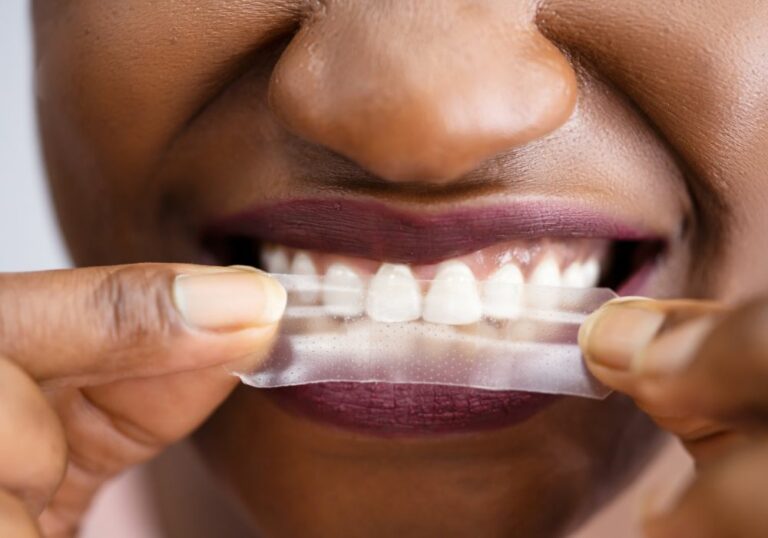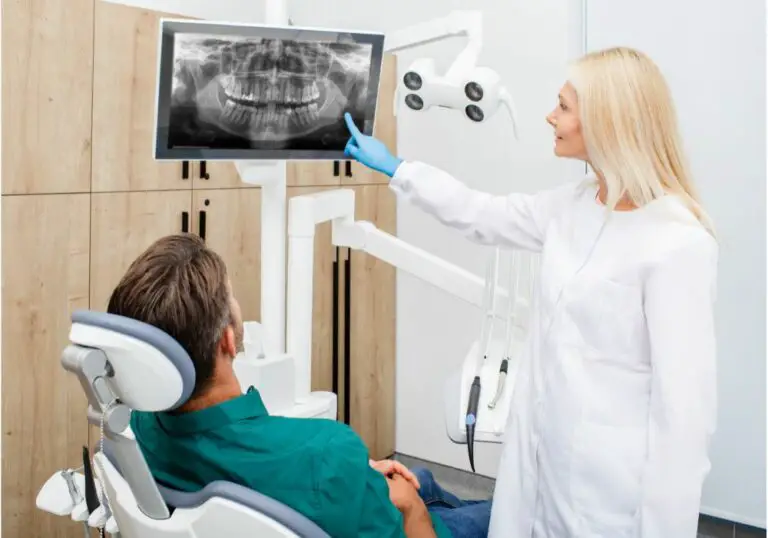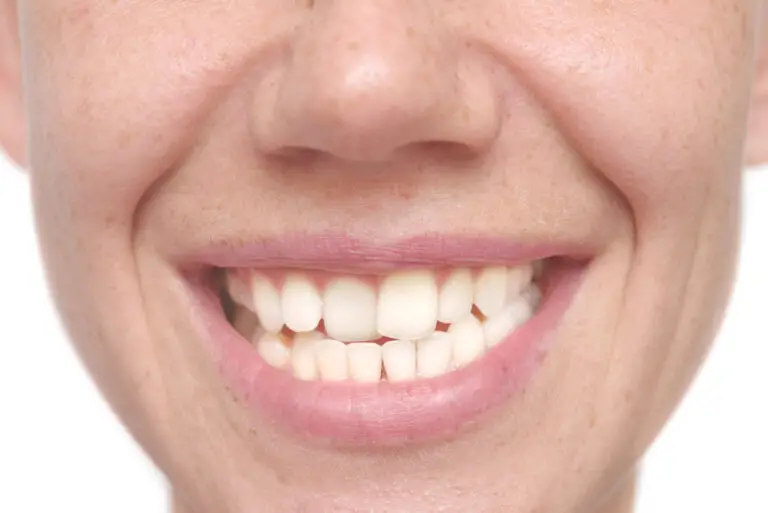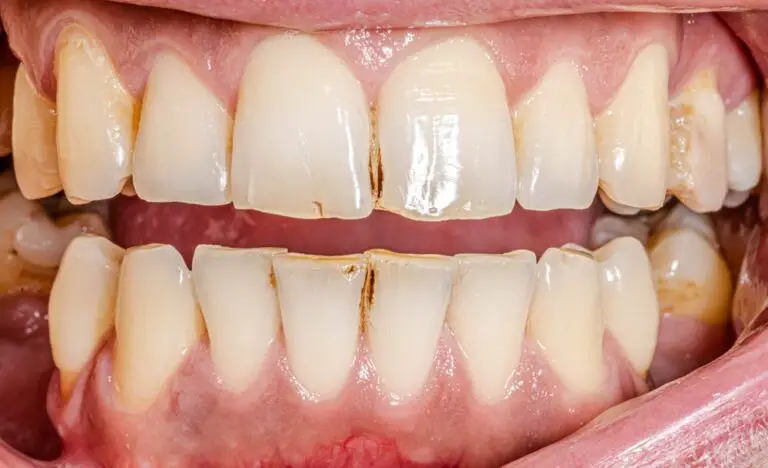Achieving a bright, healthy smile requires more than just daily brushing and flossing. While regular oral hygiene habits are essential, additional deep cleaning help remove stains and plaque that brushing and flossing alone can’t tackle. Read on to learn several methods and best practices for deep cleaning your teeth at home.
The importance of deep cleaning teeth
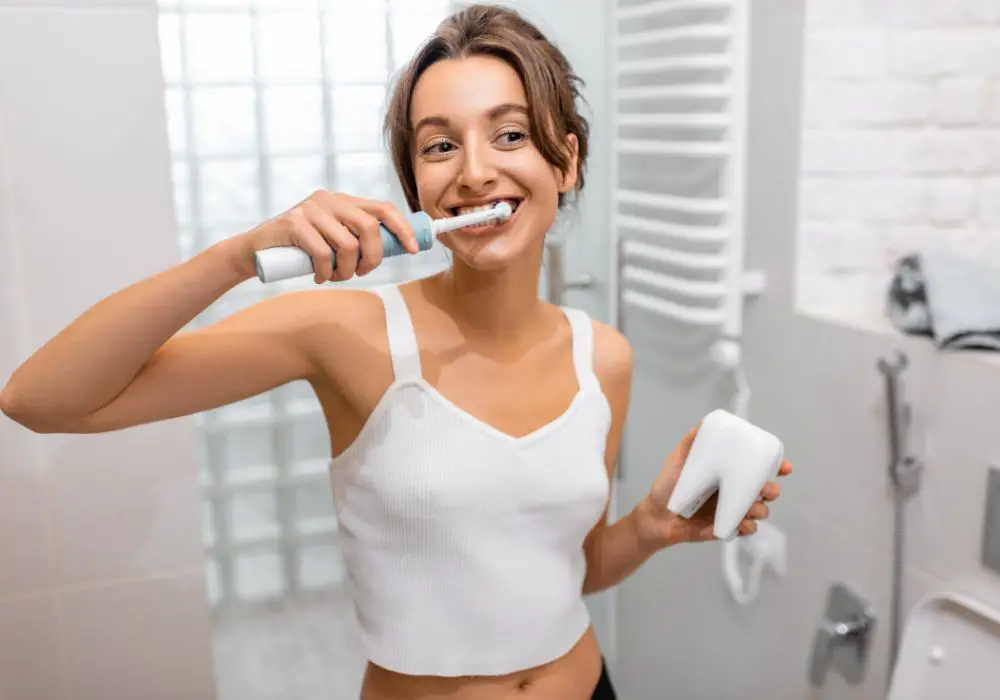
Before detailing the techniques, let’s look at why deep cleaning your teeth matters for both oral health and appearance:
- Fights plaque buildup – Plaque is a sticky biofilm of bacteria that adheres to teeth. Regular brushing and flossing only remove some of this plaque. The longer plaque remains, the more it hardens into tartar that can only be removed by professional cleaning. Plaque also releases acids that decay tooth enamel if left on teeth.
- Prevents gingivitis & periodontal disease – Left unchecked, plaque causes gingivitis, or inflamed gums, which can progress to advanced periodontal disease. These dental conditions destroy gum tissues and the bones that support teeth. Deep cleaning helps disrupt plaque below the gumline that brushing misses.
- Freshens breath – Food particles and bacteria in plaque cause bad breath. Thorough cleaning scrapes away odor-causing bacteria coating the mouth.
- Whitens teeth – Deep cleaning removes stains on enamel from coffee, wine, smoking and other sources that regular brushing cannot. A brighter smile boosts self-confidence.
- Saves money – Deep cleaning thoroughly at home means less intensive dental plaque removal may be needed at professional cleanings, resulting in lower costs. Catching plaque buildup early prevents expensive treatments of tooth decay and gum disease.
Now that you know the many benefits, let’s look at effective methods for deep cleaning your teeth at home.
Brush and floss thoroughly
Careful brushing and flossing should form the foundation of your oral hygiene routine. When done properly and consistently, toothbrushing and flossing disrupt the bacterial plaque that builds up on teeth, which prevents cavities, gum disease, bad breath and stains.
Here are some tips to maximize the effectiveness of your daily brushing and flossing for cleaner teeth:
Optimal tooth brushing techniques
- Use a soft-bristled toothbrush. The ADA recommends choosing a soft bristled toothbrush as the firm bristles found on some toothbrushes can wear down and damage tooth enamel over time. Look for toothbrushes, either manual or electric, that carry the ADA Seal of Acceptance.
- Hold brush at a 45-degree angle. Tilting the head of your toothbrush at a 45-degree angle allows the bristles to clean underneath the gumline and other hard-to-reach areas. Holding your brush straight or parallel to the tooth surface does not allow for effective cleaning between teeth and along the gumline.
- Use short, gentle strokes. Scrubbing aggressively with a toothbrush can erode enamel. Instead, use short back-and-forth strokes and light pressure. Let the bristles do the work.
- Brush every surface. Systematically brush the outer, inner, and chewing surfaces of each tooth. Use a rolling motion to brush the tongue side surfaces. Don’t neglect the backs of your front bottom and top teeth.
- Brush for 2 minutes. Short brushing sessions of 30 seconds or less do not remove plaque from every area. Set a timer or play a 2-minute song while you brush to ensure you brush thoroughly.
- Brush your tongue. Use soft sweeping motions to clean bacteria, food debris, and dead cells from the surface of your tongue. This helps freshen breath.
- Replace brush every 3-4 months. Over time, the bristles on a toothbrush fray and lose effectiveness. The ADA recommends replacing your manual or electric toothbrush about every three months.
Effective flossing techniques
Flossing is essential for cleaning in the small spaces between teeth that your toothbrush cannot reach. When done properly, flossing removes plaque and food particles before they can harden into tartar or cause decay.
For cleaner teeth, be sure to:
- Use 18 inches of floss. Wind most of the floss around each third finger, keeping 1-2 inches taut between hands. This provides a fresh section of floss for each tooth.
- Gently curve against teeth. Shape the floss into a C-curve against the side of each tooth. Rub up and down using light pressure rather than ripping or snapping floss between tight contacts.
- Floss beneath the gumline. Gently slide the floss beneath the gums, scouring off plaque clinging to the tooth’s root. Bleeding may occur the first few times if inflammation is present.
- Floss before brushing. Because flossing loosens plaque, it allows your toothbrush to remove debris more effectively for cleaner teeth.
- Floss at least once daily. To reap the most benefits, the ADA recommends flossing once a day. Even better, floss in the morning and at night.
Using proper technique for your daily brushing and flossing provides a critical foundation that deeply cleans teeth and gums. But additional methods can remove plaque and stains they miss for an even brighter, fresher smile.
Swish with antibacterial mouthwash
Mouthwash should form part of your deep cleaning oral hygiene routine. Swishing daily with an antibacterial mouthwash adds an extra layer of plaque removal and kills harmful bacteria left behind after brushing and flossing.
The ADA Seal of Acceptance identifies mouthwashes proven to safely and effectively reduce plaque and gingivitis when used as directed. Look for these active ingredients in ADA-approved mouthwashes:
- Cetylpyridinium chloride – A powerful antiseptic that kills germs on contact and prevents new plaque formation.
- Chlorhexidine – An antimicrobial that adheres to tooth surfaces and provides 12 hours of plaque germ protection. Rinsing twice per day is ideal.
- Essential oils – Plant-derived oils containing antimicrobial compounds such as thymol, menthol, eucalyptol and methyl salicylate.
Avoid mouthwashes with alcohol, which can dry out the soft tissues of the mouth with prolonged use. Always rinse with mouthwash at a separate time than brushing since mouthwash can rinse away toothpaste before it finishes working. Swishing daily with an antibacterial, ADA-approved mouthwash reduces bacteria buildup that leads to plaque, gingivitis, and bad breath.
Try oil pulling for whiter teeth

Oil pulling is an ancient Ayurvedic practice that has recently gained popularity for naturally whitening teeth and detoxifying the mouth. The technique entails swishing oil around the mouth for 10-20 minutes then spitting it out.
The oil’s viscosity helps it coat the teeth and gums, where it literally pulls out toxins. As the oil mixes with saliva, it becomes thin and milky white. The swishing action removes accumulated plaque, bacteria, and stains to naturally whiten and deep clean teeth.
Follow this oil pulling method:
- Take 1 tablespoon of a high-quality oil like coconut, sesame, or sunflower oil. Do not swallow the oil.
- Swish and pull the oil between teeth for 15-20 minutes. Chewing and sucking the oil helps it penetrate deeper.
- Spit oil into trash can, as it could clog sink pipes. Avoid leaning over sink to prevent aspiration if accidentally swallowed.
- Rinse mouth thoroughly with warm water to remove oily residue.
- Brush as normal. Oil pulling helps loosen plaque so brushing afterward removes more.
Perform oil pulling 1-3 times per week first thing in the morning on an empty stomach. While not scientifically proven, those who oil pull report notable whiter teeth, fewer stains, less plaque buildup, and healthier gums.
Eat teeth-cleaning foods
Adding more high fiber fruits and vegetables into your diet can also clean your teeth. Their crisp texture acts as nature’s toothbrush, while certain nutrients support dental health. Enjoy these teeth-cleaning foods:
- Apples – Their crisp snap cleans teeth while chewing. Apples also stimulate saliva production to help neutralize mouth acids and rinse away food particles.
- Carrots – Chewing raw carrots thoroughly scrubs away plaque and surface stains on teeth. Carrots also supply vitamin A needed for healthy gums.
- Celery – This super-crisp vegetable requires vigorous chewing, which massages gums and naturally scrubs teeth clean. It increases cleansing saliva flow as well.
- Spinach – In addition to physical scrubbing, spinach contains vitamin K which helps reduce inflammation and bleeding of gums to promote dental health.
- Oranges – The citric acid in citrus fruits removes stains and naturally breaks down minerals in saliva that cause plaque accumulation.
- Strawberries – Their seeds provide a gentle physical scrub. Strawberries also contain vitamin C, an antioxidant that can help reduce gum inflammation and bleeding.
- Shiitake mushrooms – Certain compounds in shiitakes show potential for fighting plaque-causing oral bacteria.
- Cheese – Chewing cheese boosts saliva production while its calcium content helps strengthen and remineralize tooth enamel.
- Yogurt – Some yogurts contain probiotics that balance bacteria levels in the mouth for a cleaner, healthier oral environment.
Use hydrogen peroxide
For a temporary whitening boost, you can occasionally brighten your smile with hydrogen peroxide. When diluted and used correctly, hydrogen peroxide naturally bleaches teeth by oxidizing and lifting stains.
Be sure to dilute hydrogen peroxide, as high concentrations could irritate mouth tissues. Here are two safe whitening methods using hydrogen peroxide:
- Hydrogen peroxide rinse – Mix 1-2 tablespoons of 3% hydrogen peroxide with water. Swish this mixture for 1-2 minutes before spitting out and rinsing with water. Use this rinse 1-2 times per week.
- Hydrogen peroxide paste – Make a paste with 1 teaspoon baking soda and 1-2 teaspoons 3% hydrogen peroxide. Gently brush onto teeth for 1 minute then rinse thoroughly. Use this paste treatment no more than once weekly.
The bubbling reaction from hydrogen peroxide helps lift stubborn coffee, tea, and wine stains for a brighter smile. While not permanent, hydrogen peroxide offers a quick and easy teeth whitening solution.
Remove stains with baking soda
Baking soda naturally dissolves and physically removes stains by making teeth slightly more alkaline. Its fine grit acts as a gentle abrasive when used in paste form to scrub away surface stains without being too harsh on enamel.
Stir 1 teaspoon of baking soda into water to make a thin paste. Brush onto stained teeth for 1-2 minutes using a soft bristled toothbrush and a gentle circular scrubbing motion. Rinse mouth thoroughly afterwards.
This simple baking soda paste can be used once or twice a week to lift away discoloration from coffee, red wine, berries and other sources without damaging enamel like harsh whitening treatments.
Chew sugar-free gum
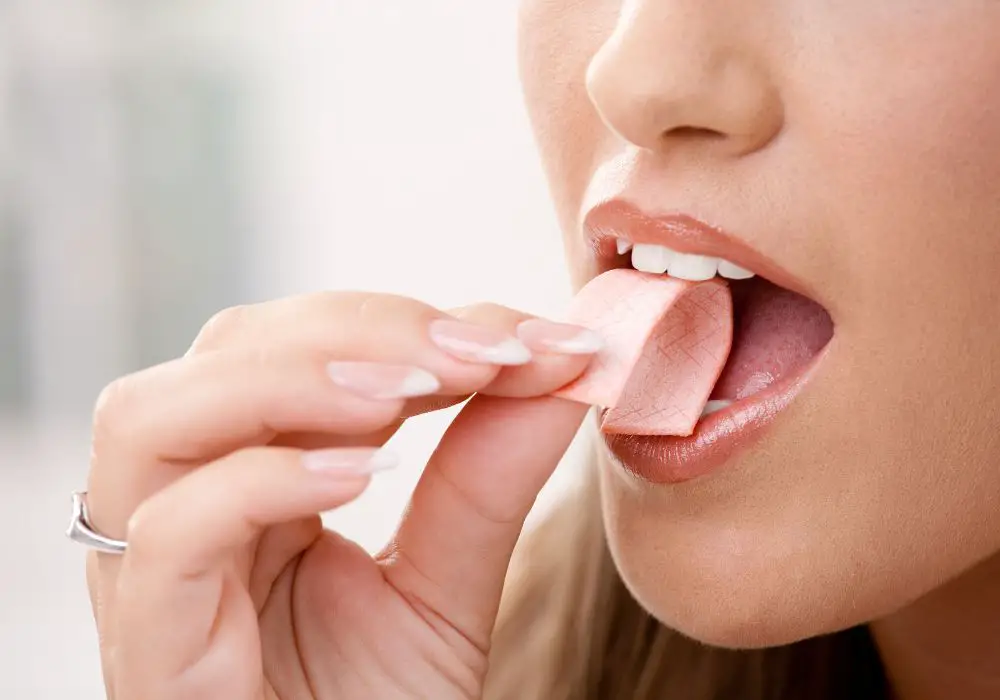
Chewing sugar-free gum for 10-20 minutes after eating generates saliva flow that helps wash out food debris and neutralize cavity-causing acids. Look for gums containing xylitol, a natural sweetener that prevents bacteria from sticking to teeth.
The chewing motion also discourages plaque buildup and scrubs tooth surfaces. Opt for a gum with the ADA Seal that states it helps prevent cavities, tooth decay, or plaque acids. While gum chewing cannot replace brushing and flossing, it boosts your mouth’s natural cleaning between meals.
Invest in an electric toothbrush
Electric toothbrushes with oscillating heads provide a powerful deep cleaning that surpasses manual brushing. Electric brushes with ADA Acceptance do a superior job removing plaque along the gumline and between teeth where cavities often develop.
The rotating and pulsating motions penetrate deeper to disrupt more plaque and bacteria than is possible scrubbing by hand. Electric toothbrushes are especially helpful for those with limited manual dexterity.
Models with built-in timers and pressure sensors ensure you brush thoroughly for a full 2 minutes without excessive pressure that can erode enamel. Be sure to change the brush head every 3 months.
Schedule professional cleanings
Deep cleaning your teeth at home helps maintain your smile between professional cleanings at the dentist’s office every 6 months. These professional cleanings are critical for preventing plaque accumulation and protecting your oral health.
Routine dental cleanings include:
- Scaling – Your hygienist carefully scrapes off the hardened plaque, or tartar, that daily home brushing can’t remove, generally using dental scalers and ultrasonic devices. This removes irritants that cause gum inflammation and disease.
- Root planing – The roots of the teeth are smoothed and cleaned beneath the gumline where deep bacterial pockets often form. Local anesthesia may be used.
- Polishing – Lastly, teeth are polished using a rubber cup with an abrasive paste to remove surface stains and create an extra smooth enamel surface to minimize plaque adhesion between visits.
More frequent cleanings may be recommended for those at high risk for plaque and tooth decay. Consistent visits ensure your dentist can catch and treat any oral health problems early on. Keep up daily flossing and brushing in between biannual cleanings.
Invest in a water flosser
Water flossers blast water streams between teeth to remove food particles and plaque in areas where traditional flossing may struggle to reach. Among the deepest cleaning dental products available, water flossers appear to be more effective than floss for reducing gingivitis.
Countertop or handheld water flosser units attach to bathrooms sinks. Adjust the pressure setting so streams firmly hit each tooth without irritating gums. Water flossers require less dexterity than traditional floss.
Use water flossers at least once daily by guiding the tip along gumlines and between all teeth. While not a substitute for string floss, many dentists now recommend water flossing as an optimal way to clean deep between teeth.
Whiten with strawberries
Strawberries offer a sweet, natural way to whiten teeth without harsh chemicals. The vitamin C in strawberries removes surface stains from teeth while the malic acid acts to naturally dissolve discoloration.
Mash about 4 large strawberries into a pulp, then apply and leave this pulp on teeth for 5 minutes before rinsing. Repeat 1-2 times per week. The fruit’s physical scrubbing and natural acids gradually lift stains over time for whiter teeth.
For intensified results, mix strawberries with baking soda then brush onto teeth and let sit for 2 minutes before rinsing. The combined efforts of the fruit acids and baking soda safely brighten smiles.
Deep clean with probiotics
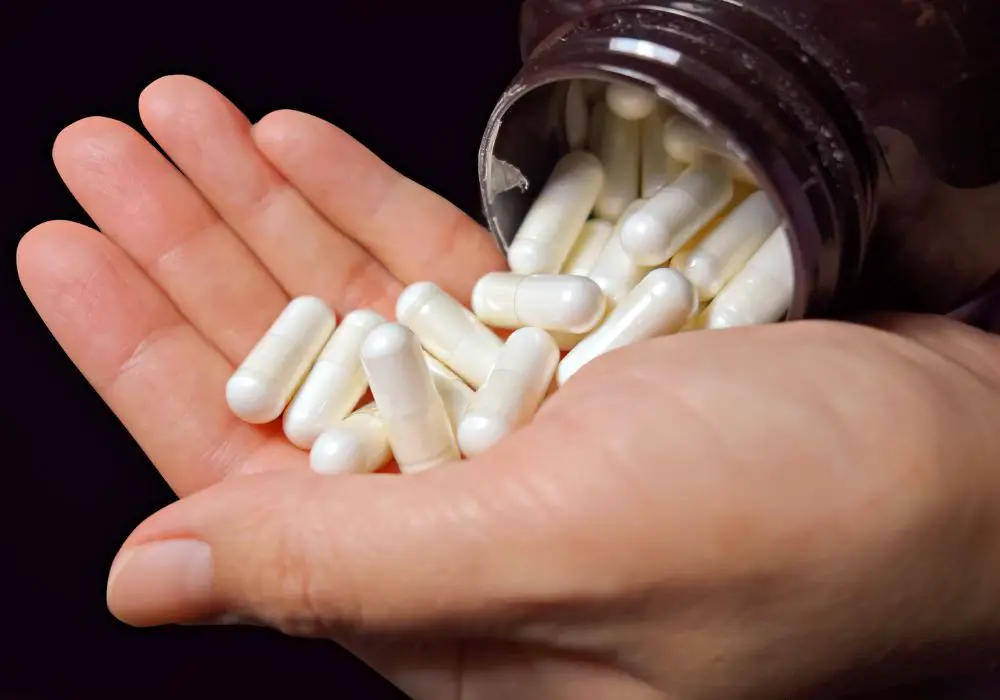
Research now suggests probiotics may support oral health through a process called bioremediation. Certain strains of good bacteria bind to teeth, gums, and the tongue where they help decompose dental plaque.
While more studies are needed, taking an oral probiotic supplement or eating probiotic-rich foods like yogurt, kefir, sauerkraut and kimchi may help reduce cavity-causing bacteria in the mouth. Probiotic toothpastes and lozenges are also now available.
Aim for a product with live strains like S. salivarius, S. oralis, or S. uberis for dental benefits. While not magic, probiotics show promise as a supplemental way to deep clean teeth.
Make your own cleansing mouthwash
You can create a natural antibacterial mouthwash at home using essential oils. Oils such as peppermint, oregano, thyme and tea tree oil contain compounds with cleansing and antiseptic properties to reduce bacteria.
To make your own mouthwash:
- Combine 2-3 drops of your chosen essential oil(s) with 1 cup warm water. You can use individual oils or blend combinations like peppermint and tea tree.
- Shake or stir to fully mix.
- Swish this solution for 30 seconds twice daily after brushing.
- Spit out and rinse mouth thoroughly after swishing.
Using this natural antibacterial rinse helps destroy plaque germs lingering after brushing for cleaner teeth and gums between cleanings. Avoid swallowing homemade mouthwashes.
Use a tongue scraper
Bacteria and toxins that cause bad breath accumulate on the tongue’s surface. Tongue scrapers gently remove this buildup when used daily along with brushing. Plastic Y- or U-shaped scrapers work best to reach far back on the tongue.
After brushing, hold out the tongue and slowly scrape from back to front several times using light pressure. Be sure to thoroughly rinse the scraper after each use. Scraping the tongue reduces odor-causing bacteria in the mouth.
Schedule teeth cleanings every 3 months if possible
For optimal oral health, scheduling professional teeth cleanings every 3 months instead of the standard 6 allows more frequent removal of bacterial plaque before it hardens into damaging tartar.
Dental insurance often covers biannual cleanings, but those at high risk for cavities or gum disease may benefit from increased cleanings. More frequent dental visits increase the chances of catching any oral problems early.
Consider the investment in quarterly cleanings to achieve the deepest clean possible, especially if you experience rapid plaque and tartar buildup. Remove more plaque before it can advance into dental decay and gum destruction.
Frequently Asked Questions
1. Can I use household bleach to whiten my teeth at home?
No, bleach contains toxic chemicals and should never be used orally. Ingesting or applying bleach to your teeth can burn and severely damage mouth tissues. Use only dental-grade hydrogen peroxide for at home whitening.
2. How often should I deep clean my teeth?
Aim to use a combination of these deep cleaning methods 1-3 times per week in between your daily oral hygiene routine and professional cleanings every 6 months. Take care not to overdo it, as overly frequent deep cleaning can erode enamel over time.
3. What foods help clean teeth?
Crunchy fruits and vegetables are great natural tooth scrubbers. Apples, carrots, celery, and cucumber clean teeth through their crisp texture, while strawberries contain stain-fighting vitamin C. Dairy products like cheese and yogurt provide teeth-strengthening calcium and probiotics.
4. Can I deep clean teeth with braces?
Yes, though you may need to modify some techniques. Use a small, soft bristled brush to carefully brush brackets and wires. Floss with a floss threader and emphasis cleaning between the wires. Avoid hard foods that could damage braces. Stay on schedule with professional cleanings to remove plaque from around braces.
5. How can I motivate myself to deep clean teeth?
Make it part of your self-care routine, schedule time for it, use phone reminders, and track your habits. Have your cleaning supplies readily available. Try gamifying tooth brushing by using a timer. Follow social media accounts or join online groups for motivation. Reflect on the health and appearance benefits of a thorough cleaning routine.
Conclusion
Achieving a deep clean of your teeth requires diligence but pays off in better oral health and a radiant smile. Along with daily brushing and flossing and regular dental visits, incorporate the natural cleaning and whitening techniques provided here into your routine. Support your efforts by limiting sugary and acidic foods and drinks. With consistent home care and professional cleanings, you can keep your teeth looking their best.

